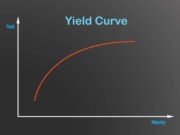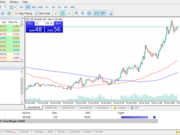
What is ‘One-Cancel-All Order (OCA)’
A One-Cancel-All (OCA) order is a type of options order that gives the trader the ability to place multiple options contracts on the same underlying security, with the stipulation that if one of the contracts is executed, the rest of the orders will be canceled. This type of order can be used when a trader is expecting a large move in the price of the underlying security, but is unsure of the direction. By placing an OCA order, the trader can participate in both upside and downside moves while limiting their risk. While this type of order can be useful, it is important to note that if none of the options contracts are executed, the entire order will be canceled. As a result, traders should only use OCA orders when they are confident in their ability to correctly forecast price movement.
Explaining ‘One-Cancel-All Order’
For example, a trader might use a one-cancel-all order if he or she has $5,000 to invest in the market and wants to put it all in one company but has several possible candidates. If the trader is looking at three stocks – ABC for $5, KLM for $20 and XYZ for $50 – the trader enters a one-cancel-all order for 1,000 shares of ABC, 250 shares of KLM and 100 share of XYZ. If XYZ is immediately filled at the $50, then the other two orders are canceled and will not be filled.
How can I place a One-Cancel-All Order
A One-Cancel-All (OCA) order is an order that gives you the flexibility to place multiple orders at different prices. If any of the orders are executed, the remaining orders are canceled. This type of order is good for trading instruments with a wide bid-ask spread. Here’s how to place a OCA order:
1. Enter the stock symbol for the security you want to trade in the “Stock Symbol” field.
2. In the “Order Type” dropdown menu, select “One-Cancel-All.”
3. In the “Quantity” field, enter the number of shares you want to buy or sell.
4. In the “Price” field, enter your limit price. This is the maximum price you’re willing to pay (if you’re buying) or the minimum price you’re willing to sell (if you’re selling).
5. Click “Preview Order.”
6. Review your order and click “Place Order.”
7. You will see a confirmation message that your OCA order has been placed.
When should I use a One-Cancel-All Order
There are a few different circumstances when it might make sense to use a One-Cancel-All (OCA) order as opposed to other types of orders. The first is when you have a basket of securities that you want to sell, but you’re not sure which one will hit your target price first. In this case, you can place an OCA order for the entire basket and specify the desired target price. Once one of the securities hits the target price, the entire order will be executed and the others will be cancelled.
Another scenario where an OCA order can be useful is when you want to buy a security at different levels. For example, let’s say you’re watching a stock that’s currently trading at $10 per share. You believe that it will eventually go up to $15, but you’re not sure when or how fast the price will rise. With an OCA order, you can place multiple limit orders at different prices ($11, $12, $13, etc.) and if any of them are executed, the others will be automatically cancelled. This allows you to take advantage of market movement without having to constantly monitor the security. Finally, OCA orders can also be used in conjunction with stop orders.
Are there any risks associated with One-Cancel-All Orders?
One of the biggest risks is that the trader may miss out on a big move if the market goes in the wrong direction. For example, if the trader enters into an OCA to buy call options and the underlying asset moves lower, all of the options contracts will expire worthless. The trader would then have to wait for another opportunity to capture a big move.
Another risk is that the trader may not have enough capital to fully fund all of the options contracts. This can lead to problems if the underlying asset makes a big move and one or more of the contracts is exercised. The trader may be forced to sell other assets in order to meet margin requirements or may even be subject to a margin call from their broker.


































